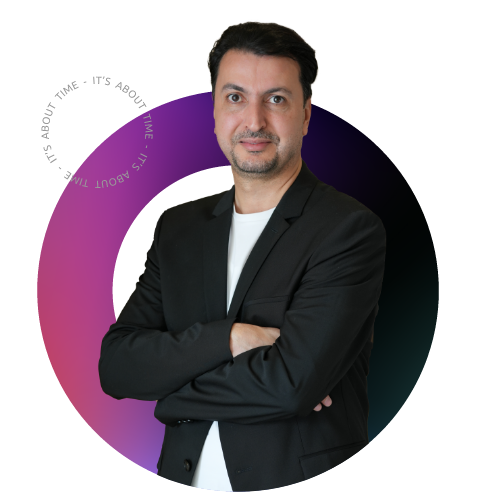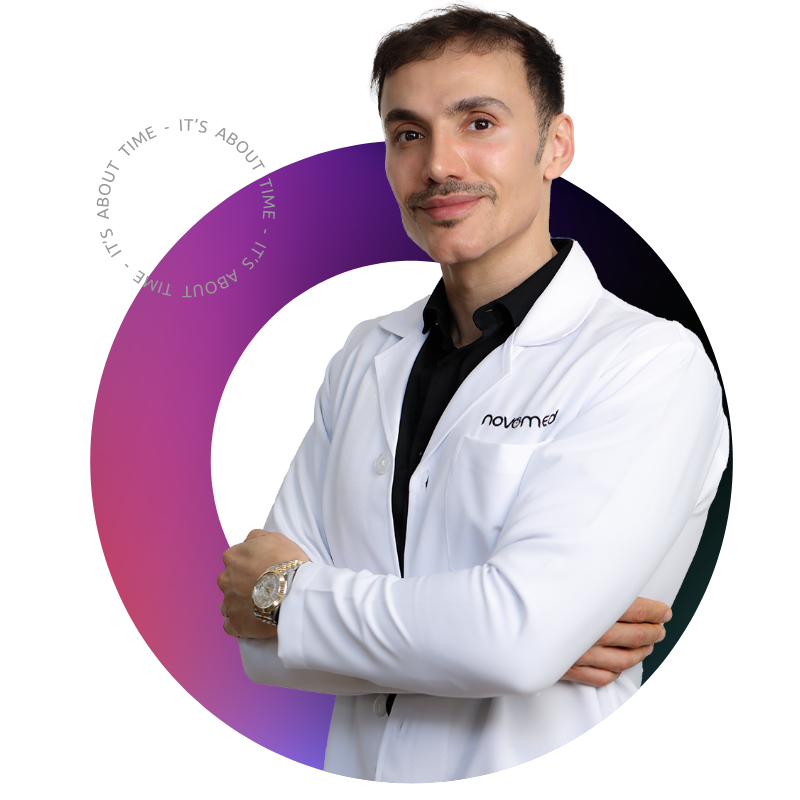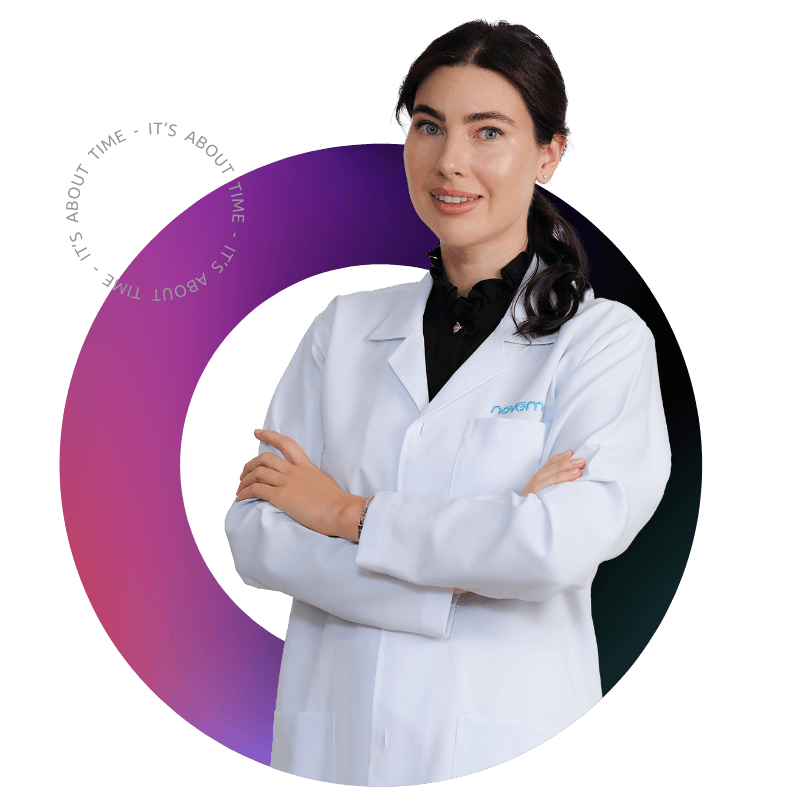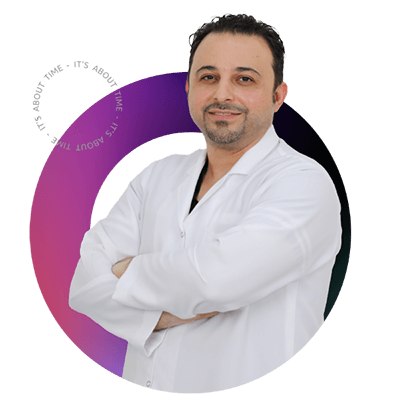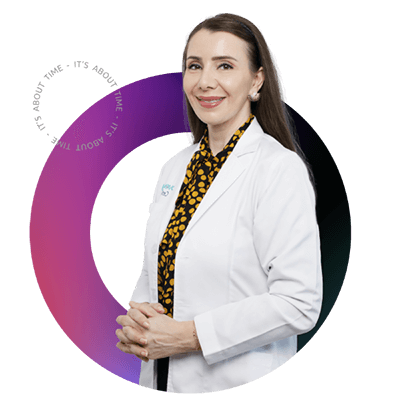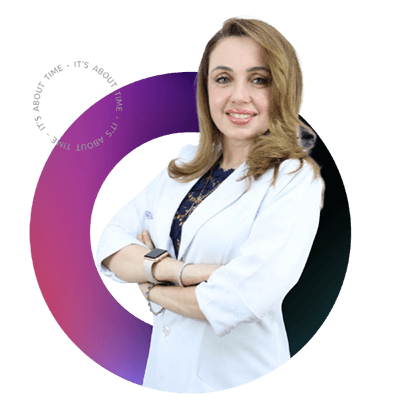Milia or milk spots are tiny, painless firm white cysts that form under the skin. It’s a very common but not too serious-to-worry-about skin condition affecting both infants and adults. Most likely to appear on your face, the small bumps do not cause any harm to your health but temporarily affect the texture of your skin and its appearance.
Novomed, with its patient centric approach and advanced treatment options, has a team of expert dermatologists to provide you with the best treatment solutions to aid natural healing by focusing on the root cause of the condition.
What are the types of Milia?
This condition can be categorized based on the area they develop on, why they develop and who they can affect. The types of Milia are:
- Primary Milia: This type form mainly on the face around eyelids, nose and cheeks but can also develop around genitals, with no underlying condition to cause them. It is the most common type that can affect both adults and infants.
- Secondary Milia: Also called Traumatic Milia, this type results from skin damage, such as burns, blisters, or trauma to the skin. They may appear at the site of the injury and can be either single or multiple cysts. Certain ointments or skin cosmetics might also result in an outbreak.
- Neonatal Milia: Present at birth, the cysts are formed around the nose on the face due to underdeveloped sweat glands and clear away on their own in a few weeks or months post-birth.
- Juvenile Milia: This type of can appear as a symptom of a genetically inherited condition and can affect older children and adults. The condition might prolong for years and will be commonly detectable on the face.
- Milia en plaque: This is a rare that particularly affects middle-aged women aged 40 onwards. It causes flat, raised patches of cysts that can appear on various parts of the face and body.
- Multiple Eruptive Milia: This type forms in groups around the face, arms, chest and abdomen, causing discomfort and itching.
- Milia associated with skin conditions: Milia can sometimes be associated with other skin conditions, such as bullous pemphigoid, porokeratosis, and epidermolysis bullosa. In these cases, addressing the underlying skin condition is necessary to manage the condition.
How can this condition be identified?
Various factors can help in identifying/ diagnosing this skin condition, including:
- Size: Milia are generally very small, typically less than 1-2 millimeters in diameter.
- Color: They are usually white or yellowish in color.
- Location: Milia most commonly appear on the face, especially around the eyes, nose, and cheeks, but they can also occur on other areas of the body.
- Texture: Milia are firm to the touch and are not filled with pus or fluid-like pimples.
- Lack of pain or redness: Milia are generally painless and don’t cause swelling, redness, inflammation, or itching except in the case of Multiple Eruptive Milia.
What are the Common Symptoms of this condition?
- White or yellow cystic bumps on your skin
- Bumps can be single or appear in groups.
- The protrusions are dome-shaped, firm and painless.
What causes this condition?
Your skin is designed to shed off old dead skin cells and form new ones to maintain body growth and skin health. When these dead skin cells do not fall entirely, some get trapped under the new skin, forming complex, flaky bumps. Other causes of milia are:
- Genetic factors
- Sun damage to the epidermis
- Skin damage due to an injury or physical trauma
- Symptom of an underlying condition
- Use of or as a reaction to a skin cream or ointment
What is the treatment for this condition?
Milia are typically harmless and often resolve naturally without the need for treatment. However, if you’re concerned about their appearance or they persist, there are various treatment options available at Novomed dermatology clinics in Dubai, Abu Dhabi and Al Ain, including:
- Topical Retinoids: Over-the-counter products containing retinoids like adapalene or tretinoin creams can aid in the removal of milia by encouraging the shedding of dead skin cells.
- Professional Extraction: Our dermatologists can safely treat this condition puncturing the cysts and extracting the waste inside.
- Cryotherapy: In some cases, cryotherapy, which involves freezing milia with liquid nitrogen, may be used to remove them.
- Laser Therapy or Electrodesiccation: Larger clusters of milia can be treated with laser therapy or electrodesiccation by healthcare professionals.
- Topical Steroids: Topical corticosteroids may be prescribed to reduce inflammation and help resolve milia.
- Medicated Creams: For Milia en plaque, the doctor providers may recommend medicated creams or antibiotics like minocycline.
Treatment for milia at Novomed is approached with expertise and the best cutting-edge equipment available. Our expert dermatologist will carefully examine and assess your skin to recommend the most suitable treatment option. It’s essential to have such procedures performed by qualified medical professionals to ensure safety and effectiveness.
Book your appointment at Novomed today!
If you have any skin concerns, don’t hesitate to schedule a consultation with one of our top dermatologists in Dubai, Abu Dhabi or Al Ain by calling 8006686, filling out the booking form or clicking the chat icon at the bottom of the screen.
